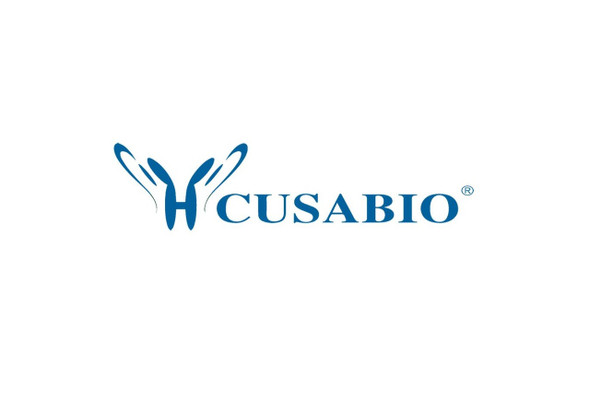Cusabio Mouse Recombinants
Recombinant Mouse Endoplasmic reticulum aminopeptidase 1 (Erap1), Partial | CSB-EP007760MO
- SKU:
- CSB-EP007760MO
- Availability:
- 13 - 23 Working Days
Description
Recombinant Mouse Endoplasmic reticulum aminopeptidase 1 (Erap1), Partial | CSB-EP007760MO | Cusabio
Alternative Name(s): ARTS-1 Adipocyte-derived leucine aminopeptidase
Gene Names: Erap1
Research Areas: Immunology
Organism: Mus musculus (Mouse)
AA Sequence: PCVQRAERYFREWKSSNGNMSIPIDVTLAVFAVGAQNTEGWDFLYSKYQSSLSSTEKSQIEFSLCTSKDPEKLQWLLDQSFKGEIIKTQEFPHILTLIGRNPVGYPLAWKFLRENWNKLVQKFELGSSSIAHMVMGTTDQFSTRARLEEVKGFFSSLKENGSQLRCVQQTIETIEENIRWMDKNFDKIRLWLQKEKPELL
Source: E.coli
Tag Info: N-terminal 10xHis-tagged and C-terminal Myc-tagged
Expression Region: 731-930aa
Sequence Info: Partial
MW: 28.3 kDa
Purity: Greater than 90% as determined by SDS-PAGE.
Relevance: Aminopeptidase that plays a central role in peptide trimming, a step required for the generation of most HLA class I-binding peptides. Peptide trimming is essential to customize longer precursor peptides to fit them to the correct length required for presentation on MHC class I molecules. Strongly prefers substrates 9-16 residues long. Rapidly degrades 13-mer to a 9-mer and then stops. Preferentially hydrolyzes the residue Leu and peptides with a hydrophobic C-terminus, while it has weak activity toward peptides with charged C-terminus. May play a role in the inactivation of peptide hormones. May be involved in the regulation of blood pressure through the inactivation of angiotensin II and/or the generation of bradykinin in the kidney (By similarity).
Reference: "A mouse orthologue of puromycin-insensitive leucyl-specific aminopeptidase is expressed in endothelial cells and plays an important role in angiogenesis."Miyashita H., Yamazaki T., Akada T., Niizeki O., Ogawa M., Nishikawa S., Sato Y.Blood 99:3241-3249(2002)
Storage: The shelf life is related to many factors, storage state, buffer ingredients, storage temperature and the stability of the protein itself. Generally, the shelf life of liquid form is 6 months at -20?/-80?. The shelf life of lyophilized form is 12 months at -20?/-80?.
Notes: Repeated freezing and thawing is not recommended. Store working aliquots at 4? for up to one week.
Function: Aminopeptidase that plays a central role in peptide trimming, a step required for the generation of most HLA class I-binding peptides. Peptide trimming is essential to customize longer precursor peptides to fit them to the correct length required for presentation on MHC class I molecules. Strongly prefers substrates 9-16 residues long. Rapidly degrades 13-mer to a 9-mer and then stops. Preferentially hydrolyzes the residue Leu and peptides with a hydrophobic C-terminus, while it has weak activity toward peptides with charged C-terminus. May play a role in the inactivation of peptide hormones. May be involved in the regulation of blood pressure through the inactivation of angiotensin II and/or the generation of bradykinin in the kidney (By similarity).
Involvement in disease:
Subcellular Location: Endoplasmic reticulum membrane, Single-pass type II membrane protein
Protein Families: Peptidase M1 family
Tissue Specificity:
Paythway:
Form: Liquid or Lyophilized powder
Buffer: If the delivery form is liquid, the default storage buffer is Tris/PBS-based buffer, 5%-50% glycerol. If the delivery form is lyophilized powder, the buffer before lyophilization is Tris/PBS-based buffer, 6% Trehalose, pH 8.0.
Reconstitution: We recommend that this vial be briefly centrifuged prior to opening to bring the contents to the bottom. Please reconstitute protein in deionized sterile water to a concentration of 0.1-1.0 mg/mL.We recommend to add 5-50% of glycerol (final concentration) and aliquot for long-term storage at -20?/-80?. Our default final concentration of glycerol is 50%. Customers could use it as reference.
Uniprot ID: Q9EQH2
HGNC Database Link: N/A
UniGene Database Link: UniGene
KEGG Database Link: KEGG
STRING Database Link: STRING
OMIM Database Link: N/A









